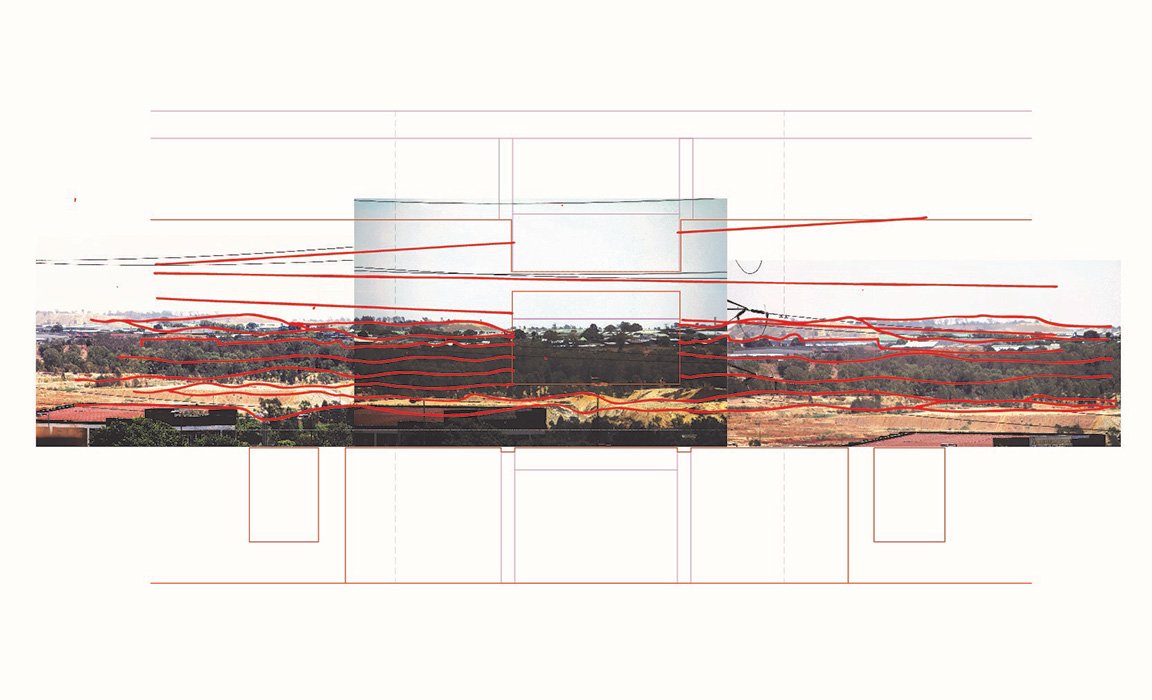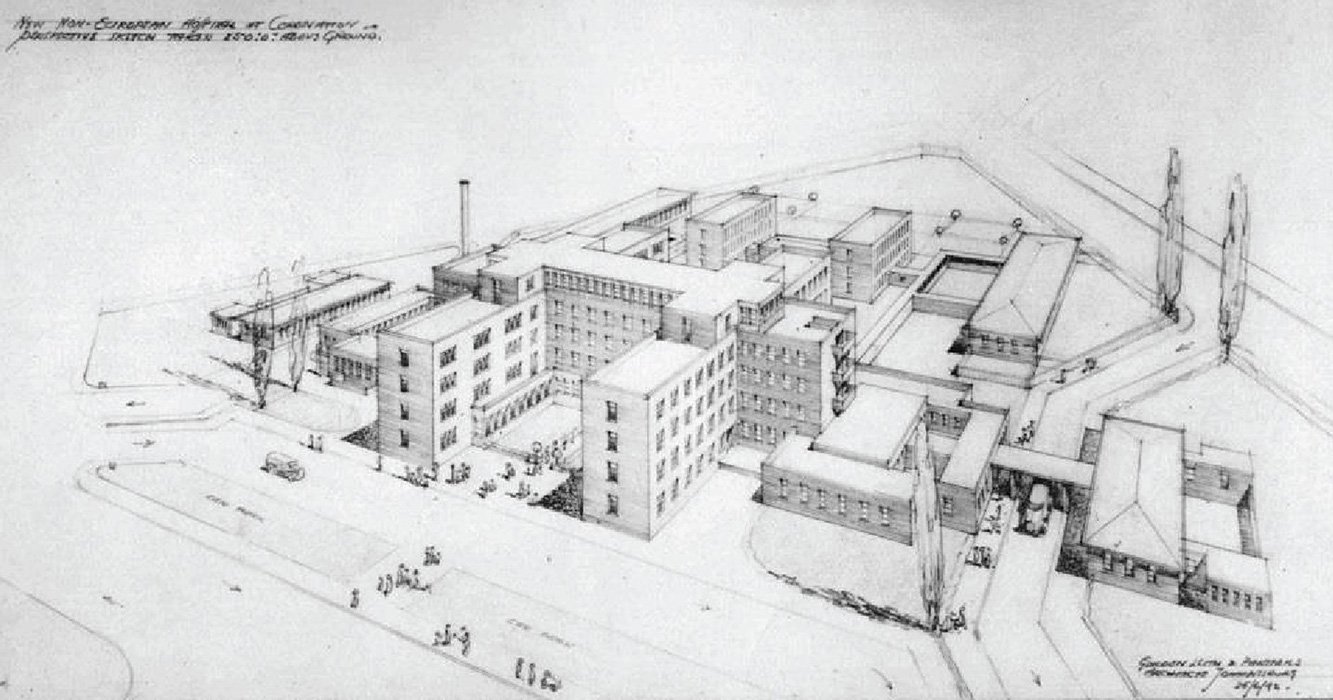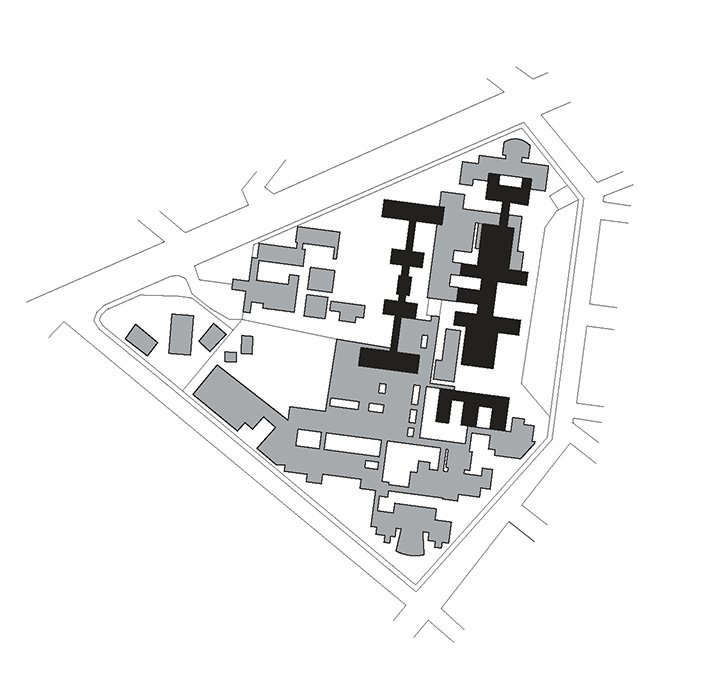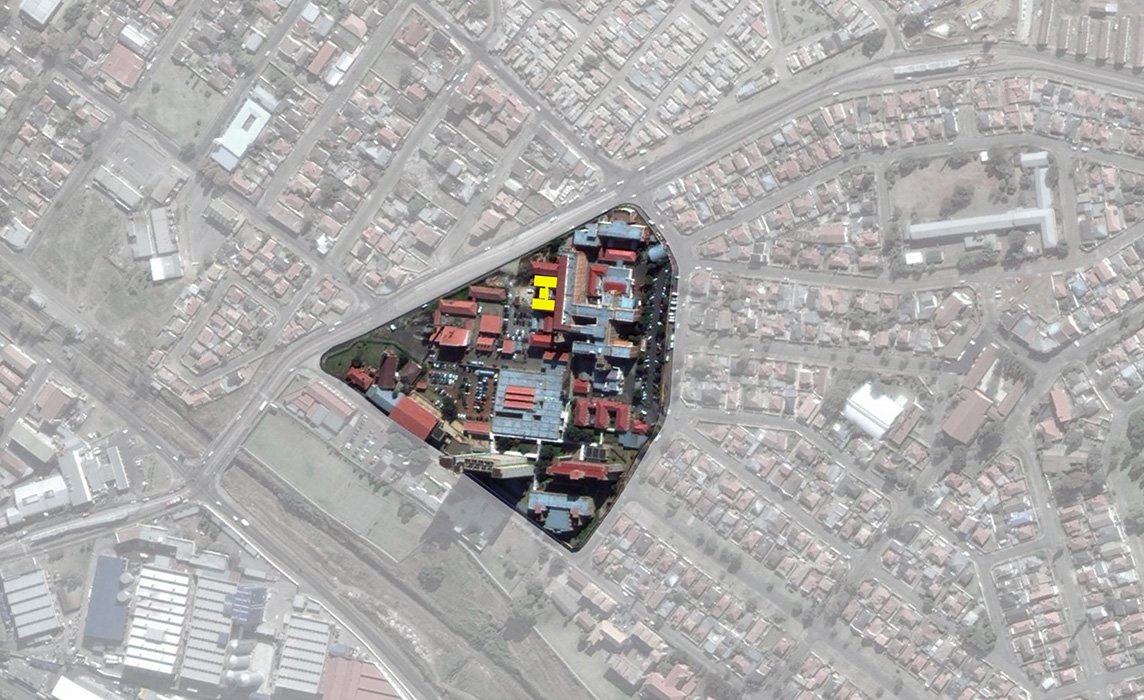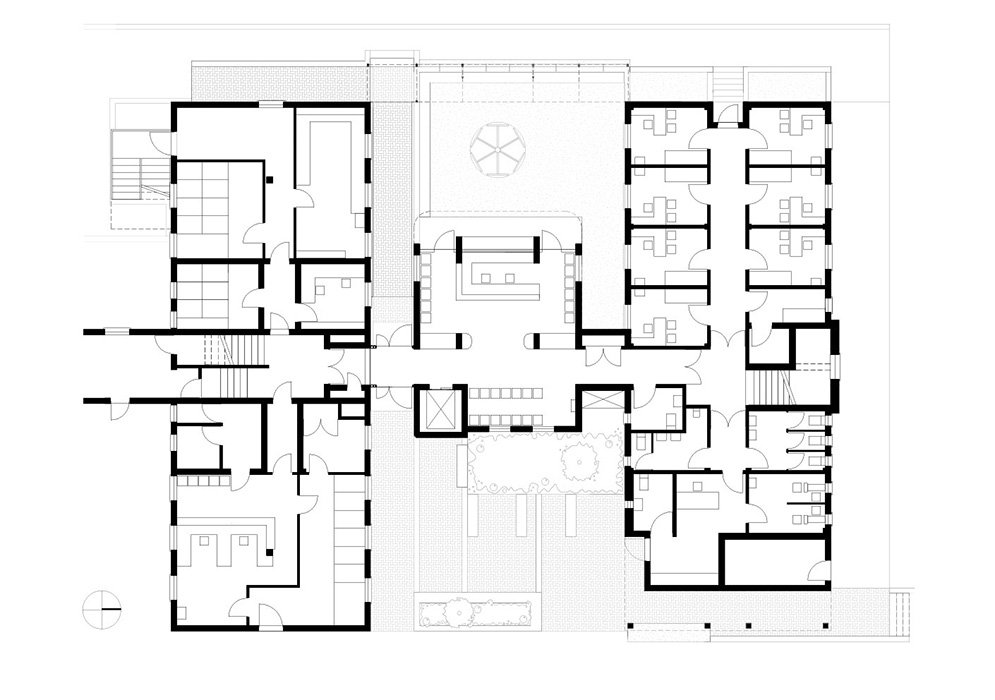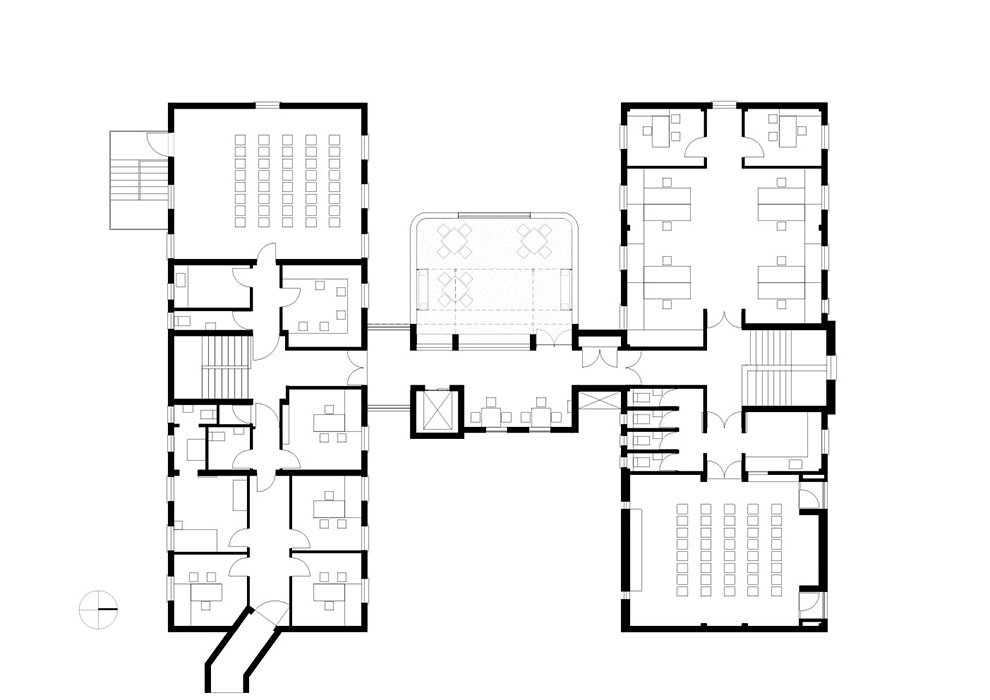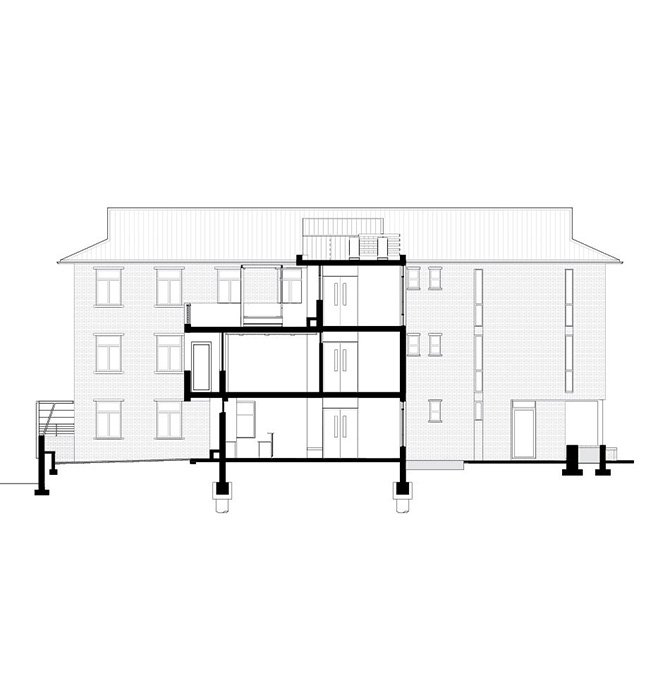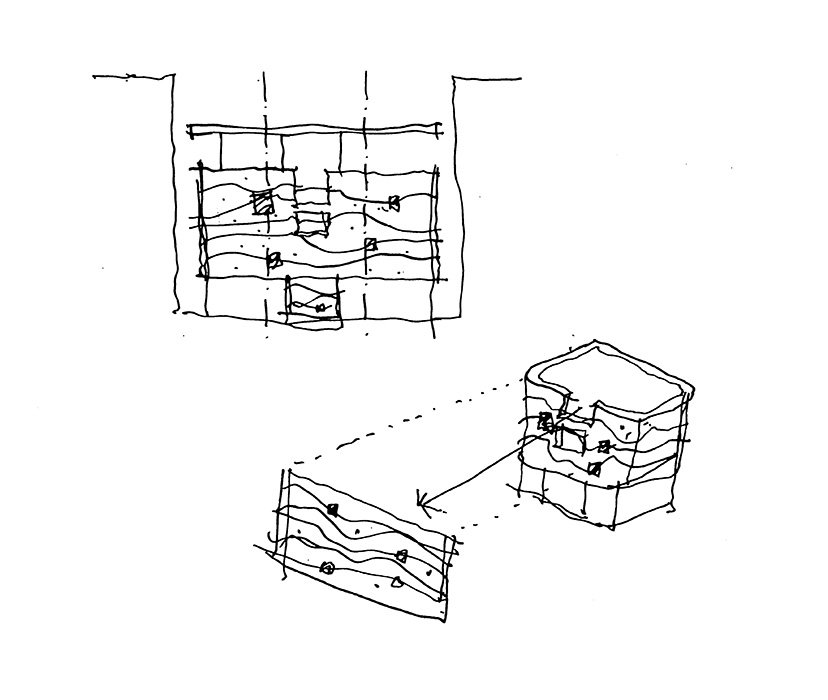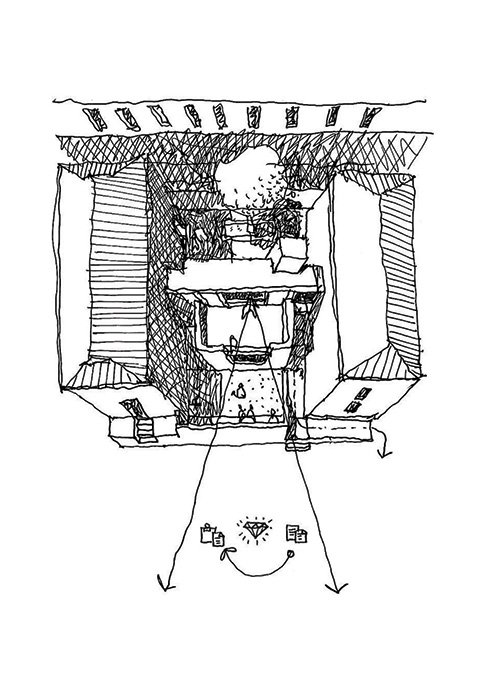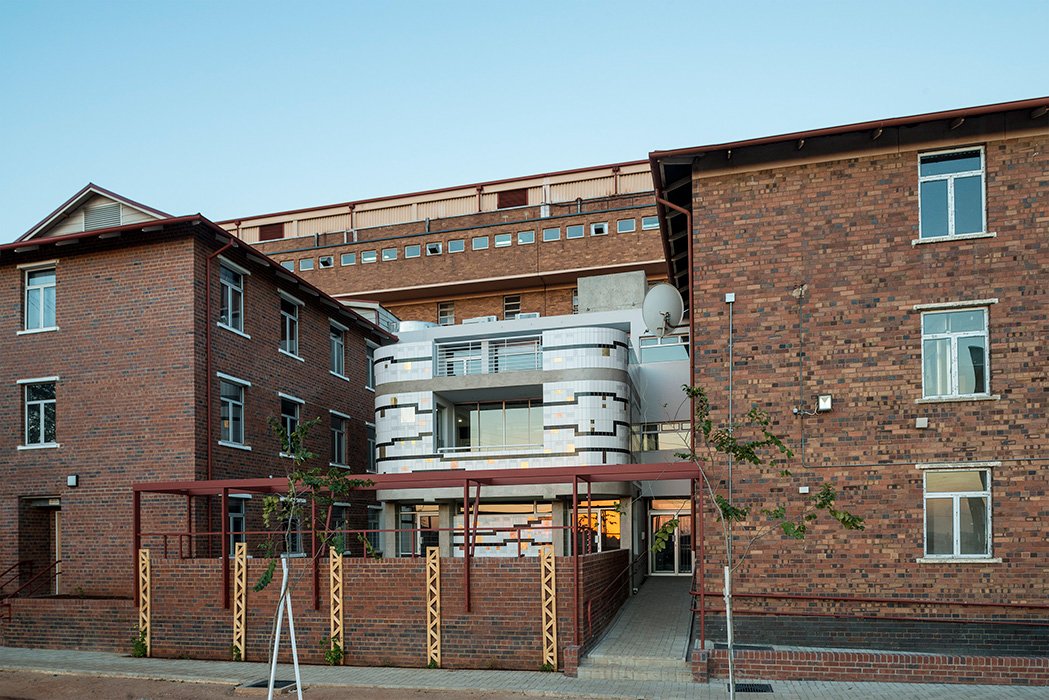
Rahima Moosa :
Hospital Extension
This extension to an existing public hospital focuses design attention on the most public areas of the building in order to elevate the daily experience of staff and patients.
The Rahima Moosa Mother and Child Hospital is situated in the sprawling suburban landscape of Coronationville, an Apartheid neighbourhood laid out to house Johannesburg’s mixed-race inhabitants. The extension is for the Empilweni Services and Research Unit (ESRU), a pediatric Research unit embedded in the Faculty of Health Sciences at the University of the Witwatersrand, leading the partnership with the University and the Department of Health at the hospital.
The new addition was designed as a ‘clone’ of one of the original three-story blocks at the back of the hospital, replicating the original pattern of blocks joined by perpendicular links. Originally designed by Gordon Leith, the unassuming brick buildings still display fine proportions and details despite being worn. By taking the radical decision to simply copy an existing building, the major design effort could be directed towards the structure linking the new block to its older counterpart and forming. The resulting H-shaped footprint creates two well-defined outdoor courtyards. One welcomes patients and the other serves as an outdoor playground and waiting area for children and parents. The emphasis on the public spaces makes a strong commitment to the public interface of the sprawling hospital complex.
The link building received a bright tiled façade, which was developed in collaboration with artist Lorenzo Nassimbeni. Its pattern was generated from the layered suburban landscape in which the building stands. Common white and black tiles were laid out and interspersed with precious metal mosaics, alluding to the history of gold in Johannesburg, but also to the points of value embedded in a rather harsh urban landscape. Working in an abstract manner allows for multiple interpretations, from a landscape to a woven fabric to a heartbeat. The changing light causes the metal tiles to sparkle and shine, adding an unexpected preciousness to an extremely utilitarian environment.
26’10 project team: Thorsten Deckler, Anne Graupner, Paul Devenish, Isabel van Wyk-de Gouveia, Nicci Labuschagne, Kegan Stokes, Shani Fakir, Carlo van Aardt, Matthew Leichti, Romeo Banza, Christine Brand
Façade artwork designed by Lorenzo Nassimbeni, built by D.ash Design Construction and Beautification
Featured in Digest of South African Architecture, 2016
Featured in Architecture SA, July/ August, 2016
Featured in Leading Architecture, June/ July, 2016
Featured in the Citizen, 3 February, 2018
Gauteng institute for Architecture Project Award Commendation, 2017
Photographed by David Southwood
